Secretary of State Mike Pompeo found in his first meeting with the North Koreans after the Trump-Kim Jong-un Singapore summit that he has a number of carrots, few sticks, and disturbingly little leverage, despite the disparity of power between the United States and North Korea. His unproductive early July visit to Pyongyang showed that negotiating with North Korea demands that the United States be in a position to exercise leverage.
President Trump gave away much of that leverage in Singapore by treating the event as a spectacle, rather than an opportunity to lay the groundwork for a negotiation to denuclearize North Korea. The mere fact of granting a meeting to Kim was of course the largest concession, legitimizing the bloody dictator of an impoverished, isolated totalitarian state as a leader on the world stage. Trump’s spontaneous agreement to suspend major U.S.-South Korea joint exercises surprised the South Koreans and his own Defense Department. He issued a joint statement with Kim—one that fell well short of the 2005 Joint Statement on North Korea that had laid out the basic framework for denuclearization—rebutting the requests of his negotiators for more stringent language and ignoring the issue of North Korean missiles capable of hitting the United States, South Korea, and Japan. The only significant step North Korea has taken toward addressing U.S. and allied concerns has been its suspension of nuclear and missile tests, which Kim announced in the run-up to his April meeting with South Korean President Moon Jae-in, not with President Trump. These failures in Singapore left Secretary Pompeo with the unenviable task of negotiating termination of North Korea’s nuclear and missile programs beginning a lap behind the starting line.
Developments since Singapore
Since the Trump-Kim meeting and President Trump’s declaration that North Korea no longer threatened the United States, what has happened to turn U.S. aspirations into reality? Or not?
- North Korea has reportedly upgraded nuclear enrichment sites and expanded production of solid fuel engines for its missiles.
- Kim paid a third trip to China, reminding Washington that Pyongyang hopes to rely on Beijing to resist excessive U.S. pressure.
- Sanctions against North Korea have predictably begun to crumble, as regional powers emboldened by Trump’s coming-out party for Kim no longer feel the need to maintain “maximum pressure.” China has resumed flights, loosened scrutiny of North Korean laborers entering China, and seemingly looked the other way as North Korean barges carried coal to Chinese ports. Meanwhile, Chinese ships have transferred oil at sea and Chinese black marketers resumed trade with North Korea.
- North Korea has failed to follow through on its pledge to send remains of roughly 200 American service members killed in the Korean War, despite Trump saying the remains had already been sent.
- South Korean President Moon has undertaken a series of tension-reducing measures with the North, including reopening maritime communications channels, promoting joint celebrations of historical Korean events, and encouraging the development of a joint North-South economic vision for the future of the peninsula. Along with Russian energy giant Gazprom, South Korea is planning talks with North Korea about a proposed pipeline from Siberia through North Korea to the South.
- Russia has continued to break U.N. sanctions by supplying oil products in excess of U.N.-mandated caps.
- Secretary Pompeo’s July visit to Pyongyang, which was supposed to give momentum to the denuclearization process, was by all accounts except his own deeply disappointing, with no progress on or statements by Pyongyang on denuclearization, failure to set up joint working groups, and a snub by Kim Jong-un, who refused to meet with Pompeo.
How are the concerned countries doing? A report card
So where are we now, a month after the Singapore meeting? Here is our early assessment and grade for what each of the principal actors has achieved since the Singapore meeting relative to its interests and aspirations:

Looking Ahead
President Trump squandered most of his sticks for dealing with North Korea by his negligence in Singapore. He is left now primarily with carrots for coaxing North Korea to move toward nuclear disarmament. Under what circumstances can Washington effectively offer carrots, and will Pyongyang find them appetizing?
Relaxing or lifting sanctions is of less negotiating value now than before. South Korea and China increasingly are shadow-boxing over who will secure a firmer toehold in North Korea’s economy, thereby reducing the sense of economic pressure Pyongyang previously felt. That said, North Korea will insist on relaxation and ultimately elimination of sanctions, and make steps on sanctions removal a condition for satisfaction of any demands made by Washington.
Establishing diplomatic relations—or some way station such as a liaison office—would hold some appeal to Pyongyang, but it is something North Korea has not wished to pay a price for in the past, so it will not elicit much.
The allure of a peace treaty to replace the 1953 Armistice for Pyongyang remains. Using it as a lever to extract concessions would require Washington, Seoul, Beijing, and Tokyo to be in lockstep on what Pyongyang would need to do in order to enable a peace treaty, as well as a joint diplomatic strategy for pushing Pyongyang verifiably to deliver on agreed upon requests.
Another carrot is the possibility of a second Trump-Kim meeting, probably in the United States, which Trump has dangled. Trump could insist that North Korea make a credible public commitment on denuclearization—one that exceeds the level of specificity of North Korea’s pledge in the 2005 Six-Party Talks joint statement—before he agrees to meet again. For any process to sustain momentum, it will need to go beyond recycling text of past agreements.
In addition, Washington should insist that U.S.-North Korea working groups precede any leader-level meeting. The United States should insist that North Korea provide a full and thorough declaration of its nuclear and fissile material inventory, and take verifiable steps to halt missile production while talks are ongoing. Such steps would provide indicators that Kim Jong-un is committed to making a strategic shift from nurturing WMD programs to developing the North Korean economy.
If President Trump squanders the leverage of a second leader-level meeting, meets with Kim without first securing commitments on denuclearization, and continues to insist that leader-level bonds can transcend decades of hostility, then—wittingly or not—the United States will be recognizing North Korea as a nuclear state. Just as the United States previously decided that countries like Pakistan (as well as India and Israel) are not hostile to the United States and therefore could be trusted to maintain a nuclear arsenal, Trump could attempt to make a similar argument about North Korea. For anyone who considers such an outcome, which would be an abandonment of a decades-old American position and an encouragement to would-be nuclear powers everywhere, inconceivable, just recall that blowing up the G-7 and threatening to abandon NATO not long ago also were considered inconceivable. Therefore, if Trump and Pompeo are not able to secure tangible commitments from Pyongyang, they need to be prepared to freeze the negotiation process and make clear they are willing to revert to the pre-Singapore relationship, although doing so is unlikely to rally the international community absent clear provocations by North Korea.
If President Trump comes to believe that a nuclear North Korea poses a tolerable risk—and sees North-South reconciliation progressing—then it may only be a matter of time before Trump puts on the table with Kim a drawdown of U.S. troops on the Korean Peninsula. Trump already has set the predicate by lamenting that troops on the Korean Peninsula cost too much, do little to deter North Korea, and therefore should come home in the future.
If President Trump simultaneously accepts a nuclear North Korea and weakens America’s alliance with South Korea, he will strike a mortal blow to America’s standing in Asia, not to mention the credibility of American security commitments worldwide. Japan in particular would draw adverse conclusions about the reliability of the U.S. security commitment and move to greatly strengthen its own independent capabilities.
The stakes are high and the margin for error is small. The United States still has usable leverage. Now Trump needs to start exercising it, instead of merely boasting of his wonderful relationship with Kim and declaring the problem is already solved.
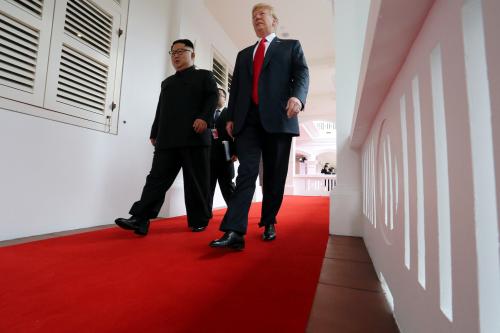
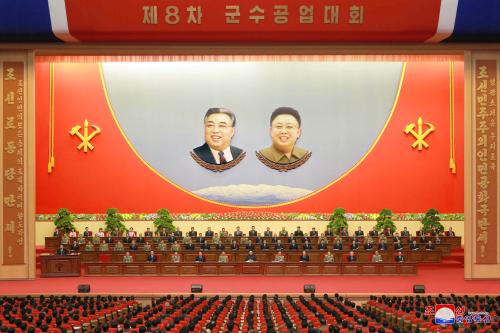


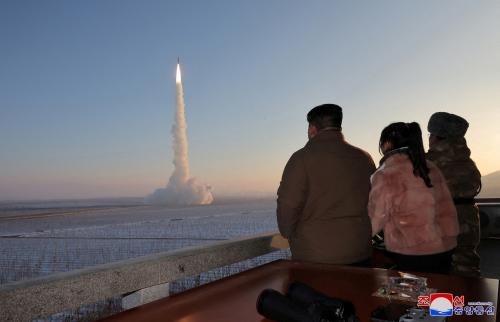
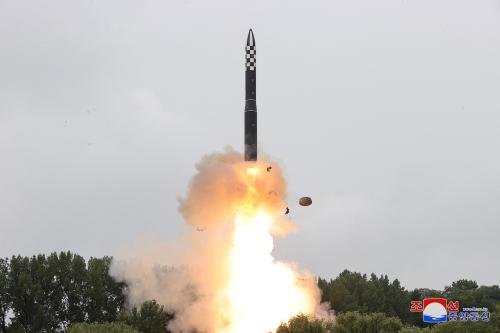
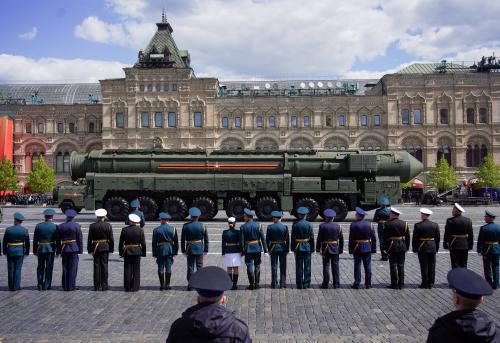
Commentary
Since Singapore: Letting North Korea off the hook
July 17, 2018